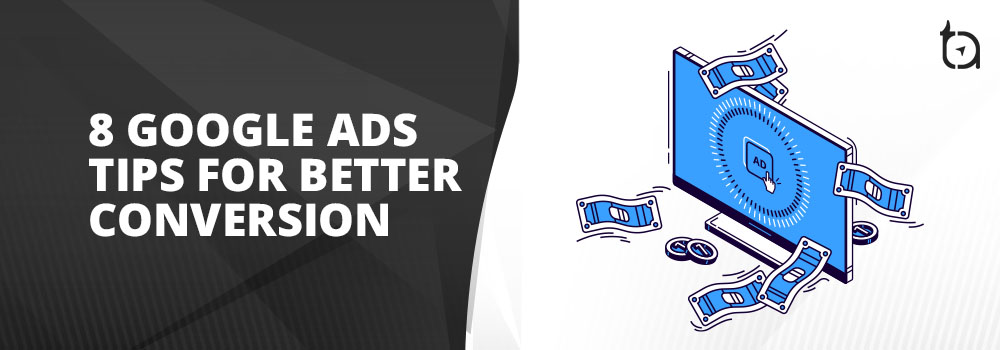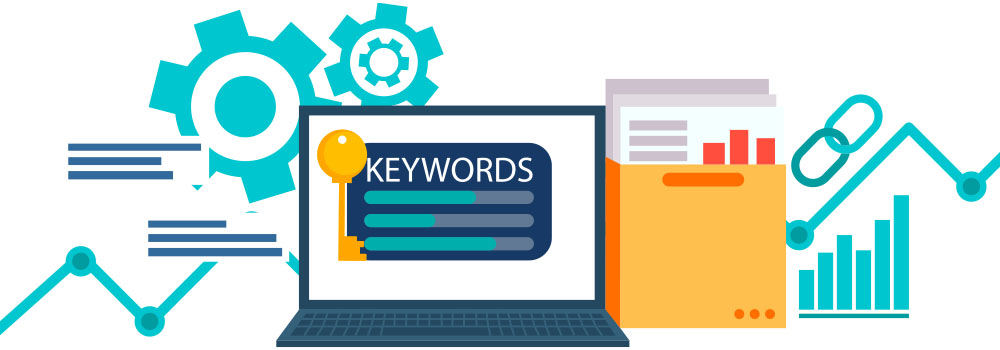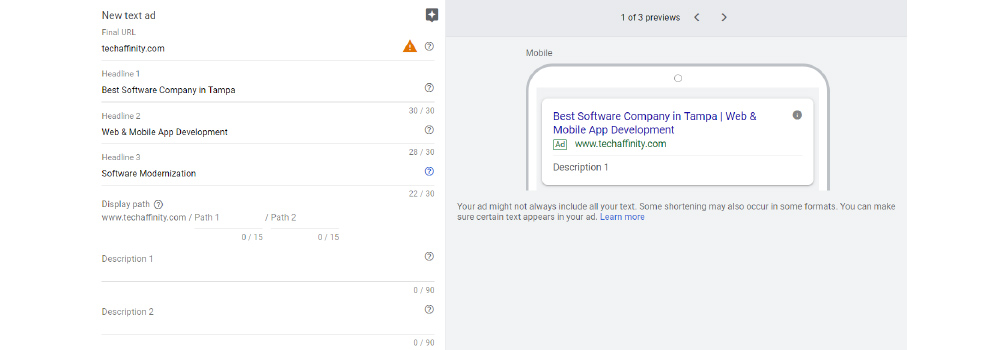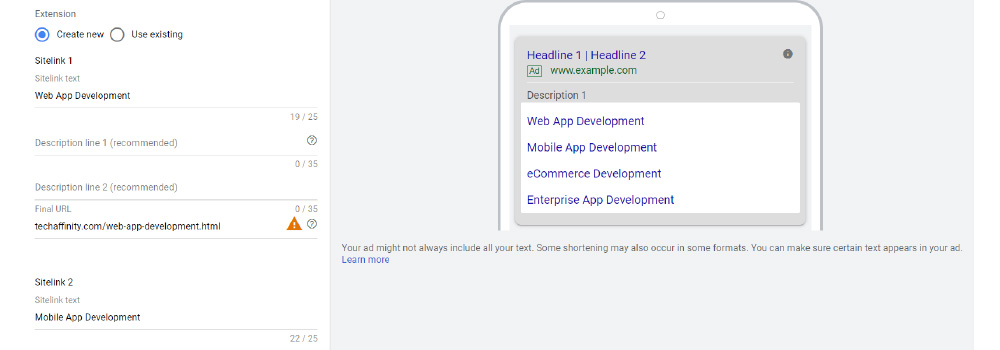8 Google Ads Tips for Better Conversion

Author : TechAffinity 22nd Sep 2020

As a business, you need a well-crafted PPC strategy as part of your advertising campaign to grow your conversions and revenue. Two of the best places to look for potential customers are Google and Bing. After analyzing the keywords and their search volumes, we can get an idea of the buyer’s intent. Without analyzing the keywords and identifying buyer intent, it is difficult to strategize a successful PPC campaign. A poorly managed PPC campaign will result in a significant loss in marketing spend than the money it brings. You need to pay for every click that you get through these ads, and so you need to be careful about this.
Your business might have a different target audience and messaging needs, but a PPC campaign has some fundamental tactics that you need to follow. We have come up with a list of 8 often successful tips that could help make improvements to your PPC campaign. By making use of these tips, help your business make more money.
1.Make Relevant Landing Page

One of the most overlooked aspects of paid search is making a relevant landing page. Since you focus so much on the platform, you might easily forget the landing page. The ultimate goal of PPC advertising is to make a sale. A good PPC marketing drives qualified leads to a landing page. It is then the job of the landing page to convert it into a paying customer.
Your outcome must be a compelling ad that helps your customers understand your values and bring more conversions. You could do the following to ensure the optimization of your landing page by aligning the message of your ads with the landing page.
- Maintain consistency between your keywords, ads copy, and landing page.
- Repeat the ad copy points on your landing page.
- Present the same message and CTA on your landing page.
2.Use Right Keyword-Match Type

Google Ads relies on user intent through keywords. These keywords play a crucial role in determining your ad copy for PPC campaigns. When someone searches for anything on Google, relevant paid ads on Google appear based on the search term. The keywords and the types of keyword modifiers used in your PPC advertising need to be understood. There are four types of keyword matches.
- Broad – Your ad can show up for any keyword in the search query and in any order.
- Broad Match Modified – Your ad can show up only if all the keywords in the search query are present irrespective of the order.
- Phrase Match – Your ad can show up only if all the keywords in the search query are present and in the exact order.
- Exact Match – This is very close to the phrase match. It includes a few relaxations like misspellings, plural forms of words, or interchangeable keywords.
3.Alter Keywords Match with Time

At various stages of paid search marketing, you need to use the keyword modifiers wisely. For example, when starting a new Google or Microsoft Ads campaign, you could use the Broad Modified modifier to get an idea of your leads as well as keywords that could help you convert. Based on this sample data, winning phrases can be upgraded to Phrase and Exact types while you can continue running Broad Modified to find new search queries to bid.
4.Optimize Negative Keywords

One of the tools to ensure the integrity of your PPC campaign is to optimize your negative keywords. Platforms like Google and Microsoft let you specify which keywords are not a good fit for your service or product. By using these keywords, you are preventing ads from showing up in search queries that don’t match with your customer needs. It is important to let Google or Microsoft know what your service or product is not as much as it is to let them know what you are. You can either add these keywords to the campaign level or a specific ad group.
5.Fill Out All Ad Content

Extended Text Ads (ETAs) have contributed a lot to Google Ads ever since their introduction in 2016. They help you tell an overall story about your service or product. You must fill out all the relevant information fields for ads to perform better.
- Final URL – Make it a highly relevant landing page.
- Headline 1 – Include keyword theme, brand name, primary value proposition
- Headline 2 – Include the supporting value proposition, or establish context for Description.
- Headline 3 – Doesn’t show as often, but you can include a strong CTA.
- Path 1 – They are not real “URLs” but indicate the relevance of the page to the user. You can include the brand name, keyword category that relates to the ad group.
- Path 2 – You can include further supporting information to provide better context to the user.
- Description 1 & 2 – The longer section of the copy that connects the needs of the user with your solution. Focus on making it as relevant as possible for the user searches and address the needs of the user.
There is also the option of Responsive Search Ads(RSAs). Here, you give Google a list of Headline and Description options, and it will test combinations of them together and pick the best among them. You can list upto 15 headlines and 4 descriptions. In any ad combination, a maximum of 3 headlines and 2 descriptions will show. Since the headlines and descriptions can be put together in any combination, make sure how you all possible combinations make sense.
6.Use Relevant Ad Extension

Ad extensions are an essential part of the customer experience and can give you a considerable performance boost. Using them, you can create a compelling brand story while offering valuable information. Here are some of the commonly used extensions.
- Sitelinks Extensions – These are additional links to unique landing pages on your website.
- Callout Extensions – Include them to build trust with the users. Eg., “Fast Professional Service.”
- Structured Snippets – Include them to provide more information about the features offered.
- Call Extensions – This will allow you to get business numbers into your listing.
- Location Extensions – For a brick-and-mortar company, you can link your Google My Business account to your Google Ads account. Enabling this extension pulls in your location and phone number for your users to locate you.
7.Drive Budget to Mobile

More and more users are starting to convert from mobile devices. You can engage with your customers in a mobile device of their choice in the proper format through mobile-focused campaigns. You can drive qualified leads by separating campaigns. How to determine the mobile-only component in your campaign?
You can have a look at conversions by device. If mobile devices outperform other devices, then apply a positive bid modifier so that your visibility of your campaign across mobile devices increases. You can also take advantage of mobile-only campaigns by using click-to-call extensions.
8.Adjust Bids for Geotargeting

You can benefit from spending your money in specific geographic regions. You need to review where your engagement comes to prioritize spending in these regions. Though your customer’s physical location is not a big factor, you need to consider factors such as seasonality, weather, and user needs. You can optimize your PPC campaigns with geo-targeted bids considering these factors.
Here are a few reminders when setting up your geotargeting bids.
- Remember big cities eat up a substantial amount of your budget quickly and might not convert well.
- You can save money by preventing ads from showing in specific regions and increase the likelihood of a conversion by targeting other regions with specific needs.
- Based on the physical location, you need to consider and cater to the needs of your different customer types.
Final Thoughts
A PPC advertising campaign that is run with the right strategy can immensely profit your business. We, at TechAffinity, have a lot of experts who run specialized Google Ads and Microsoft Advertising campaigns based on your needs. Feel free to send your queries to media@techaffinity.com or schedule a call with our experts.